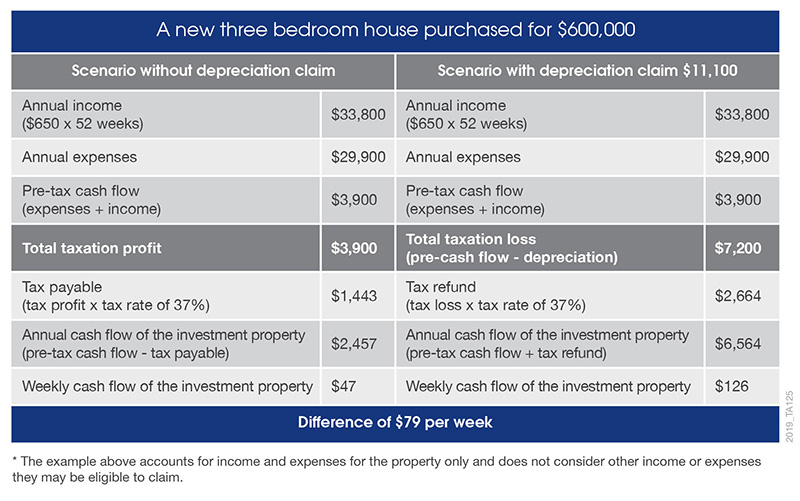Tax tips - property depreciation 101
Property investors are entitled to numerous tax benefits, however many fail to take full advantage of the depreciation deductions available to them.
Property investors are entitled to numerous tax benefits, however many fail to take full advantage of the depreciation deductions available to them.
Depreciation is considered a non-cash deduction, meaning you don’t need to spend any money to be eligible to claim it.
While investors are aware of claims for expenses such as interest on their loans, council rates, property management fees and repairs and maintenance costs, depreciation is a hidden factor often missed.
To explain property depreciation further, here’s a complete guide to answer some of the most frequently asked questions and an example scenario to demonstrate how claiming these deductions improves cash flow.
What is property depreciation?
Property investors can claim sizable tax deductions for the natural wear and tear that occurs to a building and its fixtures and fittings over time. These deductions are known as property depreciation.
The Australian Taxation Office allows owners of income-producing properties to claim this depreciation as a tax deduction.
What can you claim?
Depreciation deductions are split into two categories:
- Division 43 capital works
- Division 40 plant and equipment
The capital works deductions relate to claims for the wear and tear that occurs to the structure of the property and any fixed items. Examples of capital works items include the roof, walls, doors, kitchen cupboards and toilet bowls.
Generally, any residential building where construction commenced after September 15, 1987 will entitle its owner to capital works deductions.
These deductions can be claimed at a rate of 2.5 per cent per year for up to forty years.
Owners of older buildings constructed prior to 1987 should still find out what deductions are available, as these buildings have often undergone some form of renovation resulting in capital works deductions.
Plant and equipment depreciation can be claimed for the easily removable fixtures and fittings found within the property.
There are more than 6,000 different depreciable assets recognised by the ATO which investors can claim. Examples include carpets, blinds, air conditioners, hot water systems, smoke alarms and ceiling fans.
Legislation changes made in 2017 affect plant and equipment depreciation eligibility.
Under the changes, owners of second-hand income-producing properties can’t claim depreciation for previously used plant and equipment assets. However, they can still claim for new plant and equipment assets and other capital works.
Each plant and equipment asset is assigned an individual effective life and depreciation rate by which depreciation should be calculated. Some assets may be eligible for the low-value pool or immediate deduction.
How will claiming depreciation help an investor?
Including a depreciation claim in your annual income tax return can make a significant difference for an investor.
The below scenario demonstrates an investor’s situation with and without a depreciation claim. In this example, the investor purchased a $600,000 house and rented the property for $650 per week, or $33,800 per annum.

In this example, without depreciation, the investor is experiencing a weekly cash flow of $47.
After consulting their accountant, they discovered they could claim $11,100 in depreciation in the first full financial year. By taking advantage of depreciation, their weekly cash flow increased to $126.
Who should you contact to calculate and maximise your deductions?
It’s recommended that investors contact a specialist quantity surveyor to complete a comprehensive tax depreciation schedule for their property to ensure their deductions are maximised.
Quantity surveyors are recognised under Tax Ruling 97/25 as one of a few select professionals with the knowledge necessary to estimate construction costs for depreciation purposes.
What is involved in completing the depreciation schedule?
As part of the process of preparing a schedule, a depreciation expert will visit the property to take measurements and photograph all of the assets contained within the property. They will also take detailed notes about any structural improvements or additions that have been made to the property.
They will work with the property manager to gain access to complete the inspection with the tenants. The quantity surveyor will provide a copy of the depreciation schedule to both the property owner and their accountant, so they can process your claim at the end of each financial year.




















